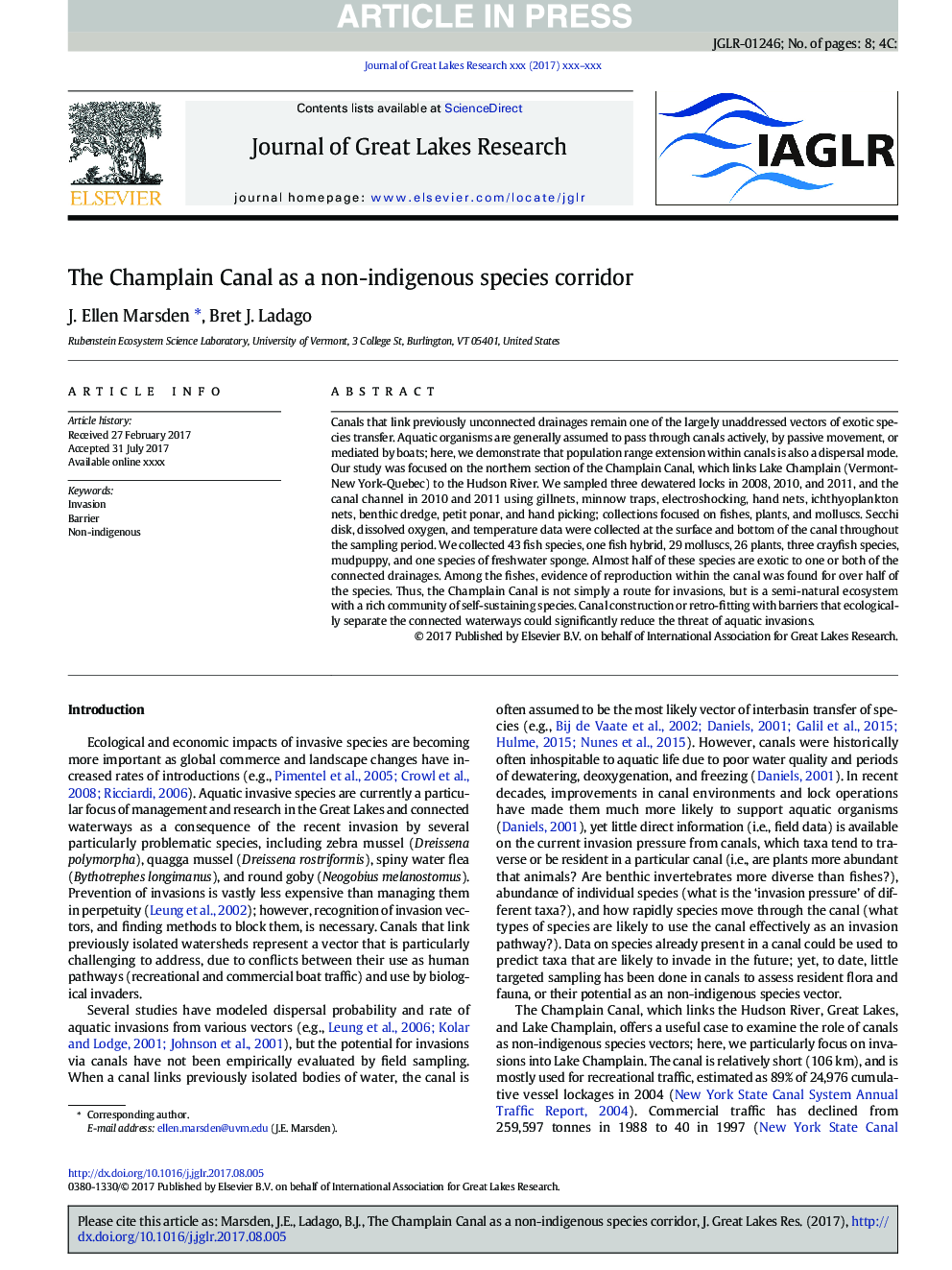| کد مقاله | کد نشریه | سال انتشار | مقاله انگلیسی | نسخه تمام متن |
|---|---|---|---|---|
| 8849211 | 1618518 | 2017 | 8 صفحه PDF | دانلود رایگان |
عنوان انگلیسی مقاله ISI
The Champlain Canal as a non-indigenous species corridor
ترجمه فارسی عنوان
کانال چامپلین به عنوان یک راهرو گونه غیر بومی
دانلود مقاله + سفارش ترجمه
دانلود مقاله ISI انگلیسی
رایگان برای ایرانیان
کلمات کلیدی
تهاجم، مانع غیر بومی
موضوعات مرتبط
مهندسی و علوم پایه
علوم زمین و سیارات
علوم زمین و سیاره ای (عمومی)
چکیده انگلیسی
Canals that link previously unconnected drainages remain one of the largely unaddressed vectors of exotic species transfer. Aquatic organisms are generally assumed to pass through canals actively, by passive movement, or mediated by boats; here, we demonstrate that population range extension within canals is also a dispersal mode. Our study was focused on the northern section of the Champlain Canal, which links Lake Champlain (Vermont-New York-Quebec) to the Hudson River. We sampled three dewatered locks in 2008, 2010, and 2011, and the canal channel in 2010 and 2011 using gillnets, minnow traps, electroshocking, hand nets, ichthyoplankton nets, benthic dredge, petit ponar, and hand picking; collections focused on fishes, plants, and molluscs. Secchi disk, dissolved oxygen, and temperature data were collected at the surface and bottom of the canal throughout the sampling period. We collected 43 fish species, one fish hybrid, 29 molluscs, 26 plants, three crayfish species, mudpuppy, and one species of freshwater sponge. Almost half of these species are exotic to one or both of the connected drainages. Among the fishes, evidence of reproduction within the canal was found for over half of the species. Thus, the Champlain Canal is not simply a route for invasions, but is a semi-natural ecosystem with a rich community of self-sustaining species. Canal construction or retro-fitting with barriers that ecologically separate the connected waterways could significantly reduce the threat of aquatic invasions.
ناشر
Database: Elsevier - ScienceDirect (ساینس دایرکت)
Journal: Journal of Great Lakes Research - Volume 43, Issue 6, December 2017, Pages 1173-1180
Journal: Journal of Great Lakes Research - Volume 43, Issue 6, December 2017, Pages 1173-1180
نویسندگان
J. Ellen Marsden, Bret J. Ladago,
